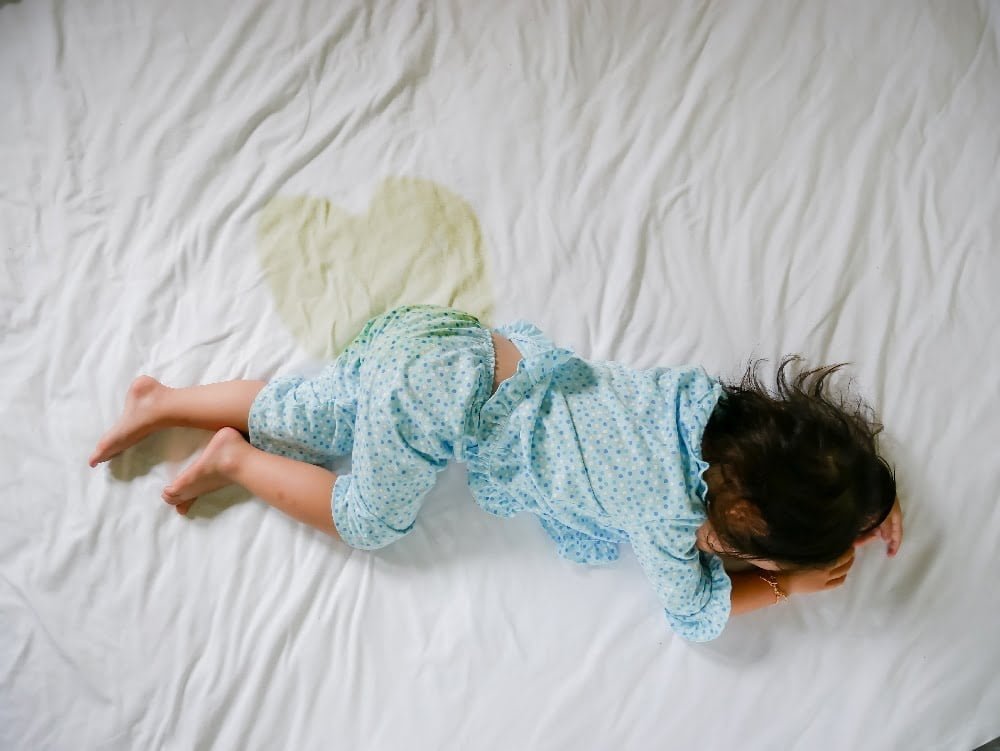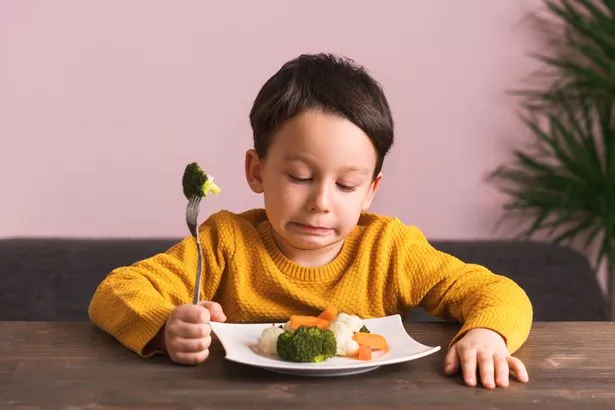Ayurvedic Treatment for Bedwetting
Control the Flow of Urination and Avoid Bedwetting with Ayurvedic Medicines
Ayurvedic Treatment for Bedwetting
Control the Flow of Urination and Avoid Bedwetting with Ayurvedic Medicines
Table of Contents
Toggle
Wet sheets and clothes can be a big embarrassment for any child especially if it continues beyond the age of 7 years. It is not a sign of bad toilet training but a part of growing up. It can become a matter of concern as a child grows up and doesn’t learn to control the bladder on a subconscious level. It is a normal problem that can be treated with medications, therapies, and lots of understanding and patience. If you are looking to adopt a natural approach, then Ayurvedic treatment for bedwetting can give you effective results in a short span of time.
What is Bedwetting?
Bedwetting
Medically, bedwetting is the loss of bladder control at night. The biological term for bedwetting is nocturnal (night time) enuresis. It is a matter of discomfort and embarrassment for the patient after a certain age. It is a normal thing in children but a matter of concern when it continues beyond the age of 7-8 years. Bedwetting is also found in adults and old age people and sometimes it is a sign of some serious underlying illness. It is estimated that approx. 2 per cent of adults experience bedwetting due to various reasons and may need some treatment.
Symptoms of Bedwetting
Symptoms of Bedwetting
Most kids are toilet trained by the age of 5, however, there is no fixed age for it. Some kids may need more time to get complete bladder control. They need help medically as well as emotionally. A few symptoms of bedwetting that should be addressed without delay are:
- Bedwetting after attaining the age of 7.
- The kid starts wetting the bed after staying dry for a few months.
- Wetting of bed is accompanied by snoring, hard stools, red or pink urine, lots of thirst, and pain.
Causes of Bedwetting
There are many psychological and physical factors responsible for bedwetting. Some of the most common causes noted for bedwetting in kids and adults are:
- The small size of bladder.
- Stress, insecurity, trauma, or some kind of fear.
- Prostate gland enlargement.
- Constipation.
- Urinary tract infection or UTI.
- Specific neurological disorders like the ones that happen post-stroke.
- Lack of sleep.
- Abnormal pauses in breathing while sleeping.
- Hormonal imbalances.
- Diabetes.

Diagnosis and Ayurvedic Treatment for Bedwetting
In Ayurveda, Vata controls the removal of urine from the body. So, bedwetting is considered a Vata disorder. Therefore, the bedwetting treatment in Ayurveda focuses on normalizing Vata Dosha in the body. It uses a variety of herbal medicines and Panchakarma therapies like Nasya, Sirodhara, Lepam, Udvartana, and Basti to control involuntary movements of the bladder. Also, the Ayurvedic treatment for bedwetting in kids is different from that for adults. Similarly, the dosage and nature of bedwetting medicines for a child is different from that prescribed for an adult or an old age person. So does the Panchakarma therapies and exercises. It is important to discuss the matters with a doctor before starting any kind of medication.
Ayurvedic Treatment for Bedwetting
In Ayurveda, Vata controls the removal of urine from the body. So, bedwetting is considered a Vata disorder. Therefore, the bedwetting treatment in Ayurveda focuses on normalizing Vata Dosha in the body. It uses a variety of herbal medicines and Panchakarma therapies like Nasya, Sirodhara, Lepam, Udvartana, and Vasti to control involuntary movements of the bladder. Also, the Ayurvedic treatment for bedwetting in kids is different from that for adults. Similarly, the dosage and nature of bedwetting medicines for a child is different from that prescribed for an adult or an old age person. So does the Panchakarma therapies and exercises. It is important to discuss the matters with a doctor before starting any kind of medication.
Preventions for Bedwetting
There is no specific set of rules to prevent or avoid bedwetting. However, there are a few things that can be done to keep the problem from progressing:
- Parents must reduce the fluid intake of their kids in the evening.
- Kids with bedwetting problem should be encouraged to void their bladder twice before going to bed.
- Parents should encourage their kids to use the toilet during the day.
- If the kid is small, help them get changed and washed as soon as they realize they wetted the bed. Wearing wet underwear for a long might lead to infection or rashes. Cover the affected area with a protective moisturizing or an ointment whenever they go to bed.

Diet and Lifestyle Changes
Kids undergoing bedwetting treatment should be given fewer fluids in the evening. Parents must encourage them to drink more fluids in the morning and late afternoon than evening and night. Adults undergoing similar treatments should avoid tea, coffee, cold drinks, and alcohol in the evening. Regular exercise and Yoga can be very helpful as they regulate metabolism and hormonal activity in our bodies. It can really help in getting control of the bladder, especially at night.
The Benefits of Ayurveda for Bedwetting treatment at Prakash Nethralaya
Investigates The Root Cause
The Ayurvedic approach to illness looks for the fundamental causes of the disease rather than symptoms. The main causative factor of the disease is removed from the patient's daily routine. Once the diagnosis is confirmed, treatment is decided from the available two directions as per the classics. First one is Shodhan (detoxification) to clean the body with the help of Panchakarma therapies and the another is Shaman (balancing the doshas) by using Ayurveda medicines, diet correction and lifestyle adjustments. Detoxification with Panchakarma improves the efficacy of Ayurveda medicines in chronic and advanced cases.
Medicines Are Safe To Take
Ayurveda medications are not manufactured in a synthetic or chemical form but in their natural state. Because of this, the herbs are gentle on the body, and there is no chance of side effect or adverse reactions, regardless of the length of time the patient takes them. At Prakash Nethralaya, we use the best quality Ayurveda medicines to ensure the safest and fastest recovery. There is in house processing and dispensing of the medicines for our patients. A few medicines are made available from the good manufacturing companies also.
Uses Holistic Strategy
Ayurveda is based on the idea that each person has a distinct personality and body type and, as a result, their treatment. Ayurveda places more emphasis on treating the patient rather than treating the ailment. The physical composition of two different people with the same ailment may need a different therapeutic approach. An Ayurveda expert at Prakash Nethralaya uses this body type analysis and then reaches at a conclusion of diagnosis and the line of treatment. Accordingly our doctors prescribe the diet, lifestyle changes, yoga, Ayurveda medicines, and Panchakarma therapies.
